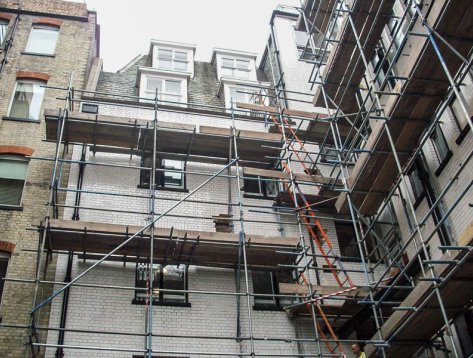CP used to combat 'Regents Street' disease
Central House is a steel frame building having a basement, ground floor and six upper floors. It is located in Central London at 14 Upper Woburn Place. When UCL purchased the building it was noticed that there were straight/regular cracks on various areas of the façade. A consultant, Drivers Jonas was brought in to carry out an initial investigation and visual survey of the building and to investigate the cracks. It was found that the cracks coincided with the steel frame of the building and were in predominantly in areas where corrosion had started to occur.
Further investigations were carried out by Carter Clark Structural Engineers and cost comparisons obtained on the different methods of combating this problem. The two options available were to 1) completely remove the façade/brickwork in the areas where the beams and columns were corroding, grit blast the metal, coat with an appropriate anti-corrosion paint and then re-instate the façade, or 2) to install a cathodic protection sysytem.
Although a survey concluded that the structural integrity of the building was not impaired, in order to protect the steel frame from further corrosion, a recommendation was made to install a Cathodic Protection system externally on the facades of the courtyard. After a feasibility study was carried out by CRL, it was concluded that installing an ICCP (Impressed Current Cathodic Protection) system was the most appropriate solution in order to stop the steel frame from corroding. The installation of the CP system was carried out in a period of 3 months and access was via independent scaffolding.

"The clent was suprised to learn that the cost of installing a cathodic protection system was half the price of breaking out the brickwork around the beams and columns and preparing and painting the steel."
Michael Balletta | Infrastructure Manager | CRL




















